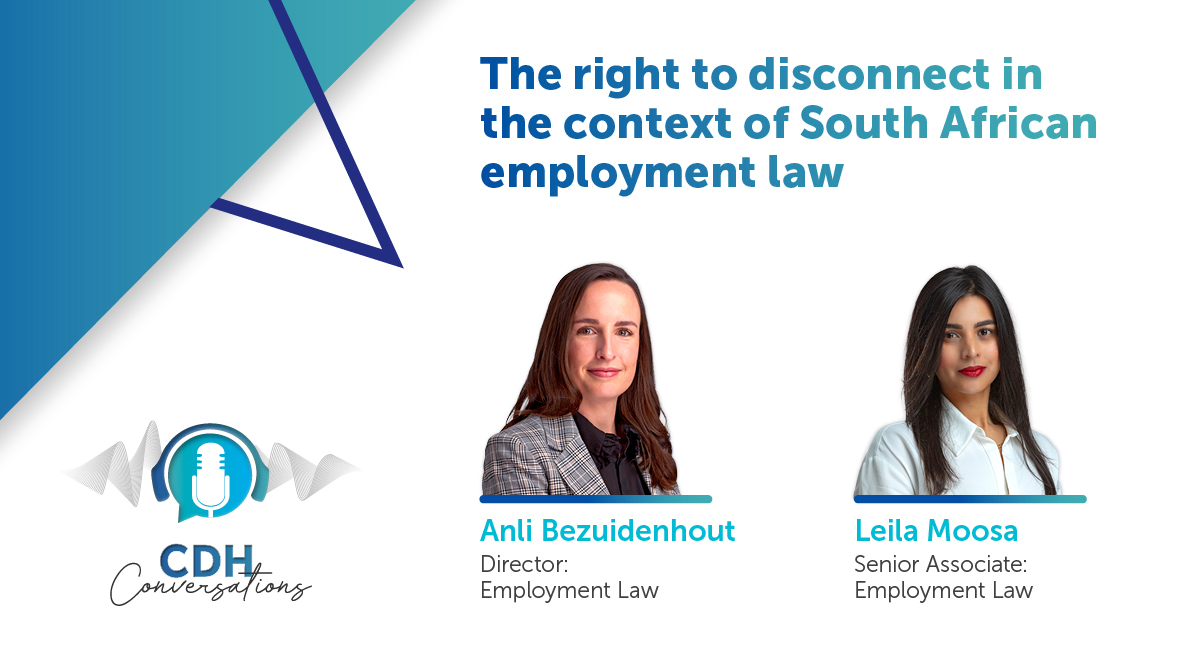Sustainability bonds and the debt market of the future: Are we ready?
At a glance
- Sustainability-linked bonds (SLB) and green debt instruments have emerged as essential instruments in mobilising capital for climate-resilient infrastructure and inclusive socio-economic project development for the purpose of supporting long-term sustainability goals.
- In the South African debt markets, interest in environmental, social, and governance aligned debt instruments (green bonds and SLBs) has been steadily growing, albeit from a low base. The establishment of a national taxonomy, harmonised reporting standards, and enforceable verification protocols has been crucial in building trust and attracting sustained investor interest.
- However, while the regulatory framework for SLBs and green bonds is rapidly improving, much remains to be done.
Green bonds, meanwhile, are fixed-income financial bonds that unlock capital for ring-fence proceeds in order for a project entity to achieve clearly defined ESG targets for environmental based projects such as solar facilities, wind farms or energy-efficient building retrofits. These instruments have grown in popularity globally, with the issuance of such green bonds and SLBs surpassing USD 1.4 trillion by the end of 2023. The importance of green bonds and SLBs lies in helping corporates not only access new sources of capital but also improve reputational standing and meet tightening ESG disclosure expectations from both regulators and investors alike.
The South African Market: A market in evolution
In the South African debt markets, interest in ESG-aligned debt instruments (green bonds and SLBs) has been steadily growing, albeit from a low base. The City of Cape Town pioneered the domestic green bond market in 2017 with a R1 billion issuance of green bonds to finance water resilience projects. Since then, financial institutions have steadily launched various green and sustainability-linked bonds or loan products, a prominent example being Nedbank’s 2019 issue of South Africa’s first certified green bond on the Johannesburg Stock Exchange (JSE), raising R1.7 billion for renewable energy projects. However, with this said, the overall adoption of ESG-aligned debt instruments in the South African debt market has been somewhat slow compared to developed markets for two primary reasons.
The first is the slow market development and uptake in green bonds and SLBs in South Africa. The slow uptake can be attributed to several factors, according to a case study by the Institute of Development and Sustainability (Discussion Paper 15/2023), including the absence of a unified taxonomy to define “green” or “sustainable” assets, inconsistent issuing, reporting and verification practices, and a general lack of regulatory and legal certainty in the face of all new developments in the SLB market.
The second reason is that a key purpose of SLBs is that issuers typically attract positive reputational and societal benefits from the disclosure of their ESGs, however, since the introduction of ESG-aligned debt instruments into South Africa, issuers of ESG-aligned debt instruments have faced challenges in sourcing credible third-party evaluators to validate their ESG claims, which has increased the risk of “greenwashing” and undermined investor confidence in the integrity of ESG-labelled instruments.
Regulatory framework
The introduction of the Debt and Specialist Securities Listings Requirements (DSSLRs) by the JSE in early 2024 represented a significant regulatory milestone in formalising South Africa’s ESG debt market. The DSSLRs provide a dedicated framework for the listing of green, social and sustainability-linked debt instruments.
In particular, paragraph 4 of the DSSLRs sets out specific disclosure requirements for issuers, including, inter alia, the identification of the sustainability objectives of the bond, the selection of the KPIs, the methodology for measuring progress, and the mechanisms for third-party verification. These requirements are being aligned with international best practices, particularly the International Capital Market Association’s (ICMA) Green Bond Principles (GBP) and Sustainability-Linked Bond Principles (SLBP). The DSSLRs also encourage alignment with broader multilateral frameworks, such as the United Nations’ Sustainable Development Goals (SDG) and the Task Force on Climate-Related Financial Disclosures.
Importantly, the DSSLRs introduce a more rigorous compliance burden for issuers. Paragraph 4 of the DSSLRs stipulates that over and above the information required for the issuance of a normal bond, SLBs require the following information to be provided in order to qualify under the DSSLRs: a report from an independent external reviewer on ESG compliance, disclosure to the JSE that the sustainability-linked debt securities incorporate forward-looking ESG outcomes pursuant to the sustainability-linked standards, and disclosure to the JSE of the alignment of the sustainability-linked debt securities with the core components pursuant to the sustainability-linked standards.
Furthermore, issuers are now expected to publish post-issuance reports that disclose progress against their stated ESG targets, along with details of any underperformance or KPI revisions. In paragraph 6, the DSSLRs mandate that once issued, issuers with sustainability-linked debt securities listed on the JSE must:
- comply with the sustainability-linked standards and DSSRs in relation to continuing obligations on an ongoing basis;
- provide evidence to the JSE that the sustainability-linked debt securities issuer complies with the sustainability-linked standards, including a verification report from an independent external reviewer; and
- in the event that the sustainability-linked standards are updated/revised, a new second party opinion to reflect the updates/revision to the sustainability-linked standards.
From a legal perspective, this creates an evolving landscape of ESG covenants and obligations which must be carefully drafted to ensure enforceability. The challenge lies in balancing flexibility, given that sustainability targets may evolve, with the need for legal certainty and investor protection. For instance, in the event of non-performance or “sustainability breach”, the bond documentation must clarify the consequences, whether financial or reputational.
In particular the JSE SLBs issuers who fail to comply with the sustainability-linked standards on an ongoing basis, must report such non-compliance to the JSE in writing and must remedy the non-compliance within a period of 25 business days. Should the issuer fail to remedy the non-compliance, the sustainability-linked debt securities will no longer be visible on the JSE.
National taxonomy and institutional roles
Although the DSSLRs succeed in providing a foundational framework, South Africa requires a broader regulatory co-ordination of green bonds, SLBs and ESG targets. South Africa lacked a national green finance taxonomy; a classification system that defines which economic activities qualify as environmentally sustainable. This created a legal grey area that may challenge the enforceability of ESG-linked covenants and investor recourse mechanisms in cases of issuer non-performance. However, National Treasury, in collaboration with the Financial Sector Conduct Authority (FSCA), the South African Reserve Bank (SARB), and other stakeholders, launched a consultation process in June 2021, when National Treasury released a draft for public comment, to develop such a taxonomy, which is expected to draw on models such as the EU’s Green Taxonomy and the International Platform on Sustainable Finance. The finalised taxonomy was eventually launched on 1 April 2022, providing a unified taxonomy in relation to green bonds, SLBs and ESG targets and thereby enhancing market clarity, preventing “greenwashing,” and facilitating cross-border investment.
The FSCA has also indicated its intention to introduce ESG-specific disclosure rules, which may become mandatory for listed entities and large institutional investors. This could include alignment with the International Financial Reporting Standards and the Sustainability Disclosure Standards recently developed by the International Sustainability Standards Board. Similarly, SARB, through its Prudential Authority, is considering integrating climate risk into its supervisory frameworks, including capital adequacy assessments and climate stress testing. The SARB’s recent Financial Stability Review identified climate change as a systemic risk, and future regulatory action could directly impact the structuring of ESG-linked financial instruments.
Next steps for the market and prospective participants
From a practical standpoint, persons seeking to issue ESG bonds must navigate several regulatory and compliance steps. These include identifying eligible green or social projects; aligning with internationally recognised principles (such as the ICMA GBP or SLBP); appointing a third-party reviewer or verifier; drafting offering documents that comply with the DSSLRs and JSE requirements; and establishing a robust impact reporting framework. A specialist legal team will play a vital role in this process, from structuring bond terms and ESG covenants to reviewing verification reports and ensuring an issuer and a projects regulatory compliance.
Looking ahead, the green bond and SLB regulatory landscape is poised for transformation. National Treasury’s Sustainable Finance Working Group is currently refining a green finance roadmap to ensure that the green finance roadmap remains a globally competitive framework for sustainable finance, while the JSE is expected to further update its ESG disclosure rules in line with local and global developments.
While South Africa’s regulatory framework for SLBs and green bonds is rapidly improving, much remains to be done. The establishment of a national taxonomy, harmonised reporting standards and enforceable verification protocols has been crucial in building trust and attracting sustained investor interest. Legal advisors have a central role to play in ensuring that ESG instruments are not only legally sound but also strategically aligned with clients’ sustainability objectives. As South Africa embarks on a just energy transition, ESG bonds present a powerful tool for unlocking capital, promoting accountability and financing a greener, more inclusive economic future.
The information and material published on this website is provided for general purposes only and does not constitute legal advice. We make every effort to ensure that the content is updated regularly and to offer the most current and accurate information. Please consult one of our lawyers on any specific legal problem or matter. We accept no responsibility for any loss or damage, whether direct or consequential, which may arise from reliance on the information contained in these pages. Please refer to our full terms and conditions. Copyright © 2025 Cliffe Dekker Hofmeyr. All rights reserved. For permission to reproduce an article or publication, please contact us cliffedekkerhofmeyr@cdhlegal.com.
Subscribe
We support our clients’ strategic and operational needs by offering innovative, integrated and high quality thought leadership. To stay up to date on the latest legal developments that may potentially impact your business, subscribe to our alerts, seminar and webinar invitations.
Subscribe




